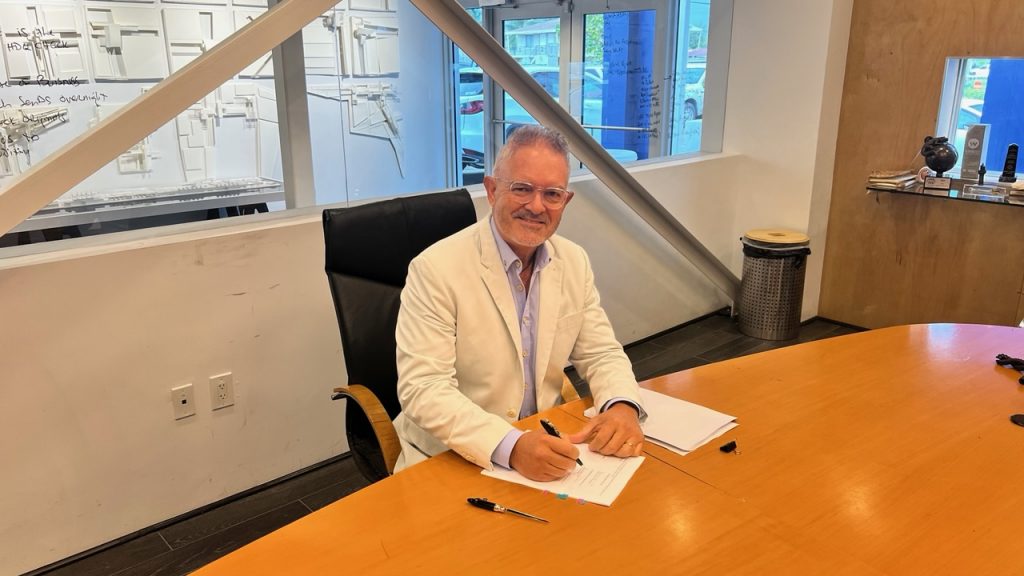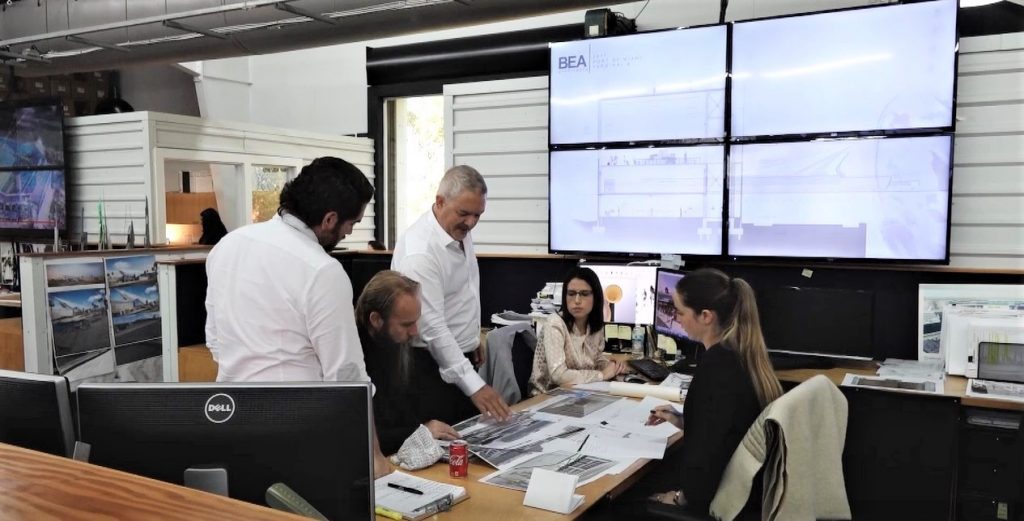
By: Kyle Niblett & Chelsea Mistretta
“Bruno, I need you to take me to the moon.”
These words were spoken to Bruno-Elias Ramos (BDES ’82, MARCH ’85) in a gentle, but firm manner, by a group of investors trying to embark on a monumental awe-inspiring project in Istanbul, Turkey.
After being challenged to imagine the world’s first underground cruise ship terminal, Ramos was forced to come up with a different solution for the Galataport neighborhood in Turkey’s most famous city. Whatever genius he birthed, the goal was simple: to free up the land for other uses and return the beautiful waterfront to the residents of Istanbul.
Ironically enough, Ramos claims he wouldn’t be able to go to the moon creatively if it was not for the state associated most with those that travel to space: Florida. There, in Gainesville, some nearly 6,000 miles away from Turkey, the Miami native graduated twice from the University of Florida College of Design, Construction and Planning. In fact, it was UF that sent him to Europe for the first time.
“My education at UF prepared me to start my career as an architect,” Ramos said. “One summer in college, I spent 11 weeks traveling throughout Europe, learning to work within teams and think outside the box so I could quickly change directions on a design. My experience at DCP gave me the proper background to do research, helped me understand the design process and formed my architectural principles.”

With those principles formed following his master’s degree in architecture at UF, Ramos founded BEA Architects in 1992 and transformed the firm into an international design practice. His first project ever was designing the Disney Cruise Terminal, with the success of the project leading to many other successful maritime projects and cruise terminal facilities around North America, Asia and Europe.
“As experts in the design of passenger cruise terminal facilities, we’ve been asked to speak at global conferences, green ports and even Seatrade Cruise Global, the largest cruise industry gathering in the world,” Ramos explained.
It was during one of BEA’s presentations at the International Global SeaTrade Convention where Galataport-Salıpazarı Liman İşletmeciliği ve Yatırımları A.Ş. Vice President of Cruise Operations Figen Ayan and General Manager Orhan Gunduz requested a meeting. The company is a partnership between Dogus Holding and Bilgili Holding and is responsible for the development and operation of the Galataport area.
Following the meeting, Ramos received a letter requesting a proposal for a cruise terminal which returned the waterfront from a restricted working waterfront to a working waterfront open to the residents of Istanbul. Never one to back away from a challenge, Ramos ran toward the idea of designing the one and a half kilometer-long site on the Bosphorus (Strait of Istanbul).
“It was definitely a huge challenge because the site is in a very historic area and the land is incredibly valuable,” said Ramos, who was tasked with maximizing the value of the land. “It was a working port closed to the public, so unless you were going there for business or to set sail on a cruise, there was no access to the waterfront.”

After realizing how much land they would have to give up, a radical question was asked by the client: What can you do to minimize the land use on the surface for other more public & commercial uses?
Ramos and his team began to diligently study the urban fabric, quickly gaining a deeper understanding of historic places like the Hagia Sophia or Basilica Cistern, which underground contain an incredible habitable space. These spaces in turn became very useful and a source of inspiration and reference for Ramos.
“We quickly began to think outside the box,” Ramos said. “Going underground meant we could free up the top side for other uses and give the public its first access to the waterfront.”
Analysis soon turned to obsession. BEA analyzed the scale factors of both human and buildings versus machines, studied the narrow streets versus the broad streets and opined on how that would interface into their site. This in turn led to figuring out vehicular traffic in circulation and the potential use of artificial light and ventilation. Finally, it came time to investigate the different vessels that were scheduled to birth in Istanbul, not to mention all the potential ships that would arrive in the future.
In addition to the research itself, the shear time commitment took its toll traveling around the world on a regular basis. From 18 to 20-hour days on Turkish time, to being on an eight-hour time difference when working from home in Miami, it was almost like working two days in one consecutively.
“I didn’t sleep much during that time,” Ramos confessed. “It was great though, because the response was quick. It worked in our favor going into a meeting, receiving comments and then being able to respond by the next business day with alternatives and concepts.”
If you thought all the advanced work and time changes were difficult, however, you must have forgotten about the biggest obstacle: the water.
When you are right next to the water on a project that is historically sensitive, Ramos’ first question was, “How do you hold the water back?” After designing a significantly deep enough structure and structural wall to hold back the sea, BEA used their quarter century of experience working in seaports around the world to partner with the local Turkish geotechnical engineers and the marine engineers on the meticulous details needed for the final obstacle.
“No project is easy,” said Ramos, who to this day gets a laugh out of the pictures of the cranes and concrete trucks working five stories below sea level. “I enjoy taking on projects with this magnitude and scale, because it forces us to be 100 percent successful in functionality and efficiency. The solutions I provide to the challenges ultimately become achievements.”
When he presented the project back to the owners, the response was the equivalent to the smoothest of sailings. The master builder was told, “Bruno, I asked you to take me to the moon, and you did.”

Displaying a selfless attitude and team-first approach he attributes to learning from professors in Gainesville, the DCP graduate is quick to credit this design, along with his other design-winning contextual projects that are on time and within budget, to his team at BEA.
“The importance of leading a team of professionals to the finish line and the successful completion of each project is never lost on me,” the Gator great said. “I could not have done this without the support and trust of my design team.”
Thanks to BEA and its understanding of the essence of the project and more importantly the built environment, Istanbul is now home to state-of-the art cruise facilities which can host up to three ships and 15,000 passengers a day. The redevelopment site also featured 400,000 square meters of construction, parking for more than 2,000 vehicles, a nearly 200-room hotel and 250 retail units on a property that wasn’t accessible to the public for more than two centuries.
And if you think Ramos doesn’t understand how out of this world the entire $1.7 billion project was, think again. From the culture, to the geography, materiality, constructability and finances, this entire 29,000 square-meter cruise terminal was an otherworldly journey like no other.
“I feel like Neil Armstrong – We went to the moon and back.”